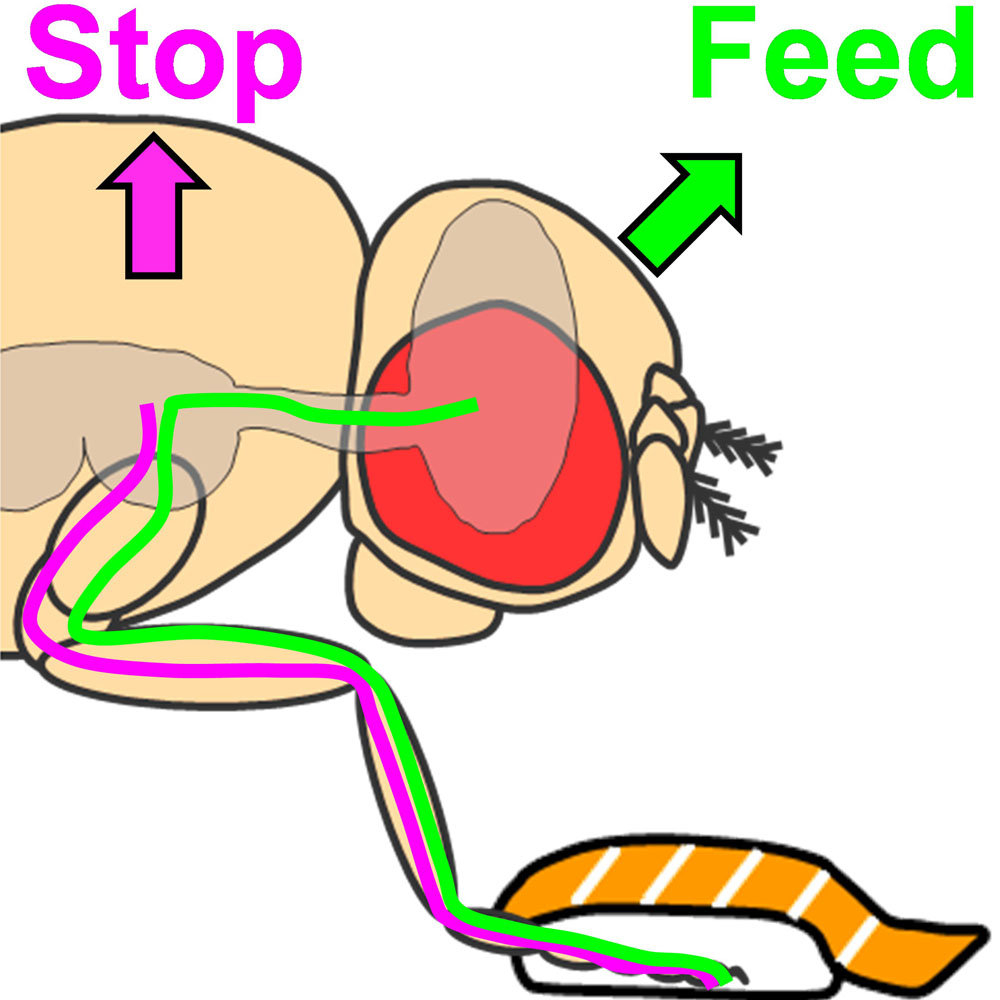Research Abstract
ショウジョウバエの甘味受容体神経の機能は味覚器官相互の間で、また味覚器官内部でも異なっている
Functional dissociation in sweet taste receptor neurons between and within taste organs of Drosophila
2016年2月19日 Nature Communications 7 : 10678 doi: 10.1038/ncomms10678

食物供給源を探し出すことは生存に不可欠である。昆虫は体外にある味覚受容神経を使って栄養を見つけ出す。ショウジョウバエ(Drosophila)は多数の味覚器官を持っていて、それらは体の全体にわたって分布しているが、これらの多様な味覚器官が摂食の際に果たす役割についてはよく分かっていない。我々は今回、一部の甘味受容体神経の機能を遮断することによって、肢にある受容体神経が糖を迅速に選択するのに必要であることを明らかにした。さらに、肢には解剖学的に種類の異なる2種類の甘味受容体神経が存在することも突き止めた。そのうちの1種の軸索投射は胸部神経節で終わっているが、もう1つは脳へも直接投射している。これら2種類の甘味受容体神経細胞は機能的に異なっていて、脳に投射している神経は摂食開始に関わっているが、胸部神経節に投射している神経は糖に依存して起こる歩行停止を制御している。同じ味に対して別の種類の受容体神経が存在することは、肢が食物に触れる最初の付属器であることを利用して、摂食行動の開始を協調させている可能性がある。
Vladimiros Thoma, Stephan Knapek, Shogo Arai, Marion Hartl, Hiroshi Kohsaka, Pudith Sirigrivatanawong, Ayako Abe, Koichi Hashimoto & Hiromu Tanimoto
Corresponding Author
Finding food sources is essential for survival. Insects detect nutrients with external taste receptor neurons. Drosophila possesses multiple taste organs that are distributed throughout its body. However, the role of different taste organs in feeding remains poorly understood. By blocking subsets of sweet taste receptor neurons, we show that receptor neurons in the legs are required for immediate sugar choice. Furthermore, we identify two anatomically distinct classes of sweet taste receptor neurons in the leg. The axonal projections of one class terminate in the thoracic ganglia, whereas the other projects directly to the brain. These two classes are functionally distinct: the brain-projecting neurons are involved in feeding initiation, whereas the thoracic ganglia-projecting neurons play a role in sugar-dependent suppression of locomotion. Distinct receptor neurons for the same taste quality may coordinate early appetitive responses, taking advantage of the legs as the first appendages to contact food.

